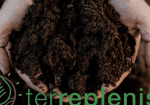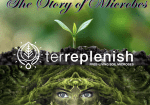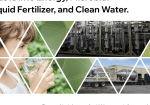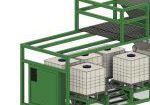Permaculture – An Approach to Address Our Agriculture Crisis
June 6, 2020
It’s no secret that we are in an agriculture crisis, yet it is not often talked about and as a result, the solutions to this crisis are rarely presented or even considered. To address this crisis, we must shift the way we grow our food and treat the earth. While there are many layers to begin this shift, we believe that it is not only possible but necessary to take immediate action. We wish to spread knowledge and solutions for what we can do to ensure food security and planet health for this generation and the many that will follow.
Today, let’s discuss the topic of permaculture and its potential to help solve many of the issues our ecosystem faces today.
What is permaculture?
Permaculture is a sustainable form of agriculture developed by Bill Mollison and his student David Holmgren. It combines the words “permanent” and “agriculture”. Permaculture works with whole-systems thinking, taking in all facets of the environment to create a thriving, sustainable ecosystem by regenerating biodiversity and lost fertility. Permaculture design integrates agroforestry, water-planning, soil-regeneration, and holistic livestock management while building farmer capacity and economic sustainability.
What is permaculture’s role in regenerative agriculture and environmental restoration?
Prominent landscape architect Lori Hawkins explains the vast potential of permaculutre stating, “Within a Permaculture system, work is minimised, “wastes” become resources, productivity and yields increase, and environments are restored. Permaculture principles can be applied to any environment, at any scale from dense urban settlements to individual homes, from farms to entire regions.”
There are many solutions and steps to address the issues we face in our current agriculture crisis, and implementing regenerative agriculture is possibly the most crucial first step (for more information on regenerative agriculture please see our previous blog post here). Permaculture can be used to inform this regenerative movement by offering a progressive system that is complimentary to what the regenerative movement encompasses.
Why does it matter?
Over the decades, agriculture has become increasingly focused on large-scale production as population increases and demands for food and animal consumption rise. However, large-scale production has resulted in the implementation of harmful agriculture practices such as monocropping, chemical fertilization, deforestation, etc,. Every system that addresses and reverses these issues are crucial to understand if we wish to heal our planet. We plan on diving deeper into many of these solutions in a series of short blogs with the hope of increasing awareness and promoting discussion on steps that we can all make to promote environmental sustainability and protection.
Be on the lookout for our next post Terreplenish fans!
Until next time,
Terreplenish
Related Posts
Grow Better with Terreplenish®
Proven nitrogen-fixing results from our blend of proprietary
free-living nitrogen-fixing microbes.
100% all natural and OMRI listed for organic use on:










